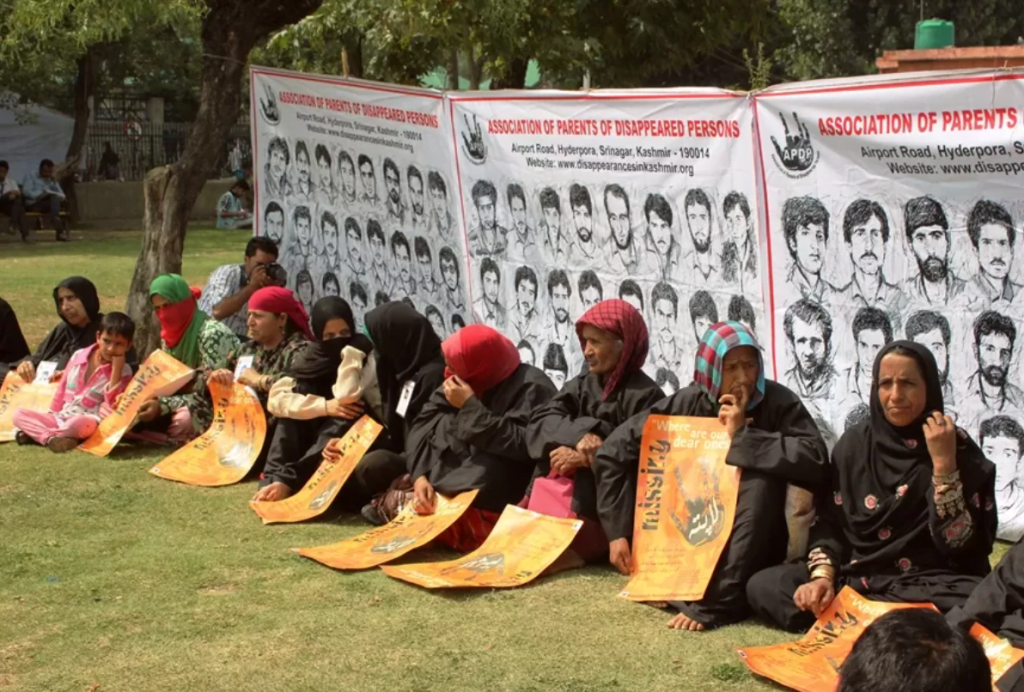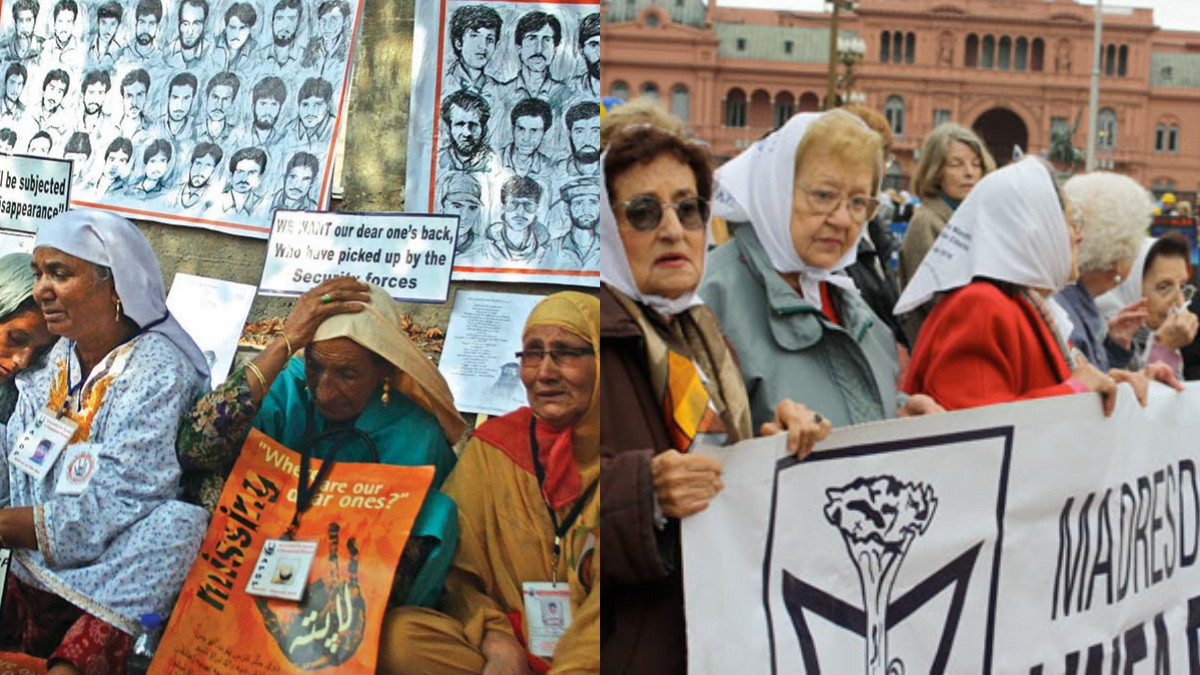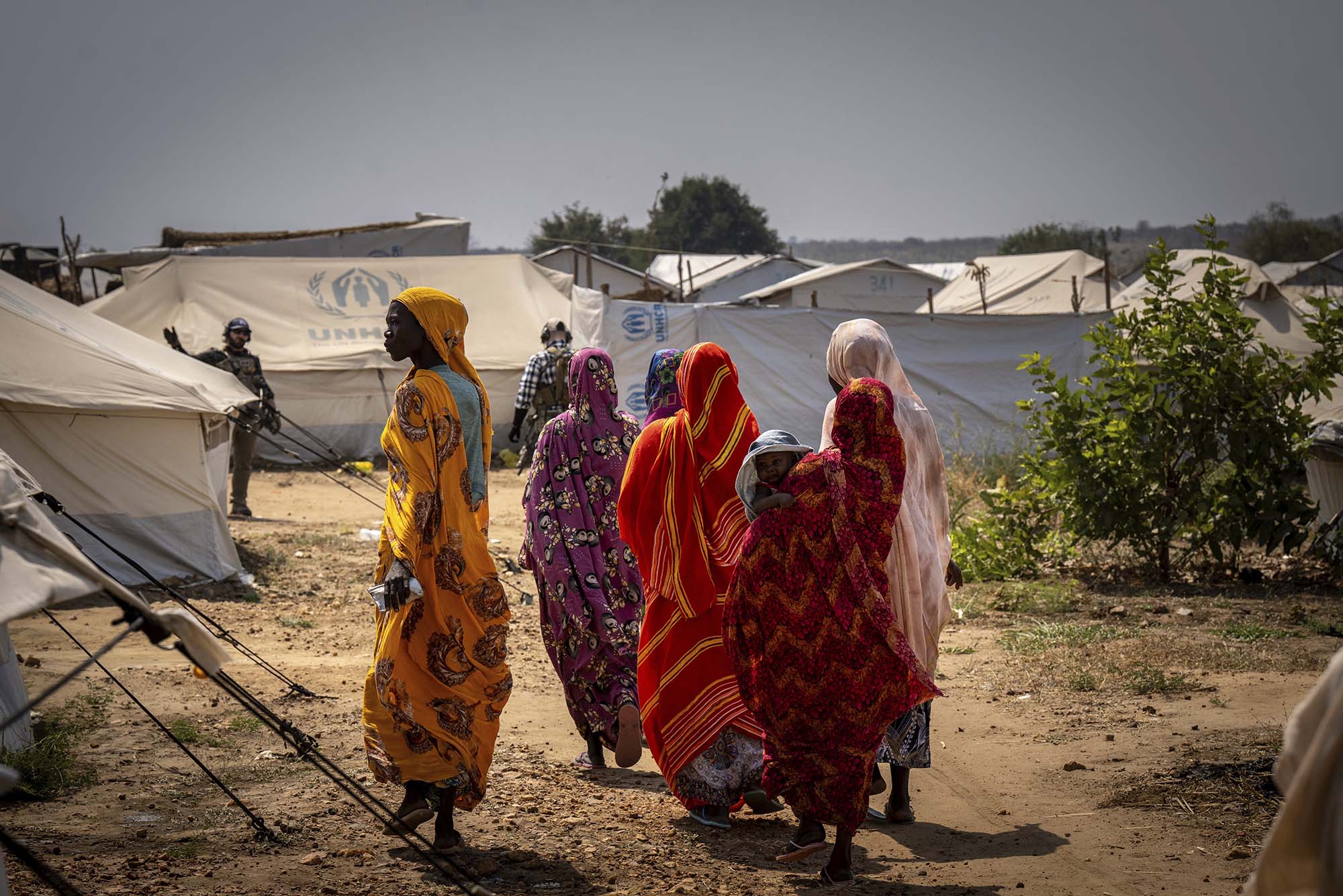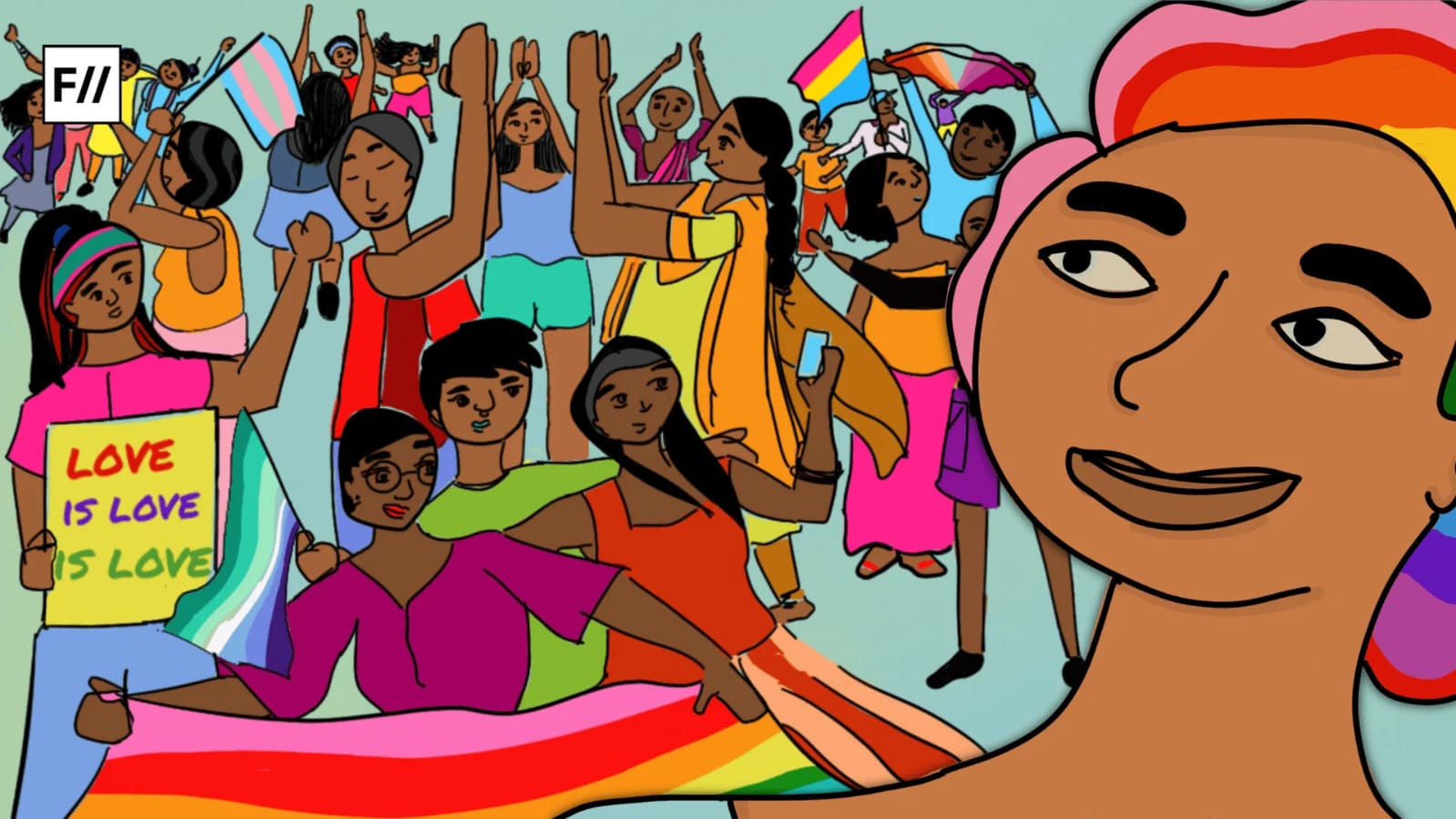Trigger Warning: Mentions of rape and violence.
Throughout history, women have consistently been subjected to the most heinous acts committed by men, motivated by sociopolitical and personal interests. Women’s bodies, autonomy, agency and individuality have been laden bare as battlefields for men for centuries. Despite movements like feminism, human rights activism and growing discourses and awareness around gendered violence, the war on women doesn’t cease.
History is cyclical, and humanity fails to learn from its past mistakes. Consider, for example, the consistent gender-based violence perpetrated in Manipur, Kashmir, Sandeskhali, Sudan, Palestine, and potentially other parts of the world.
Yet, women’s acts of strength and resistance movements are integral components of a similar historical discourse. Two notable examples of women resisting state-sponsored gender-based violence and continuing their fight to this day are the women of Plaza de Mayo in Argentina and Kashmir. The parrels between the women from across these regions reverberate loudly and the resistance they showcase is worthy of going down in the annals of public discourse.
Mothers of Plaza de Mayo’s resistance against gendered violence
Raquel Radio de Marizcurrena was celebrating her son’s 24th birthday party when some men dressed as civilians barged into the celebrations and rummaged through their house and books, writes Sue Lloyd-Roberts in her book, The War On Women. “They looked through the books, some of them were political, and then bundled my son and daughter-in-law into the police car. They said they wanted to question them and that they wanted to bring them back in a couple of hours,” mentions Sue Lloyd-Roberts in her book.
The son and daughter-in-law never came back.
Raquel Radio de Marizcurrena is one of the founding members of the organisation called Grandmothers of Plaza de Mayo, who went from pillar to post to bring back their children and grandchildren from the dirty wars of Argentina.

Women of Plaza de Mayo, including Raquel, in Buenos Aires, Argentina, launched a campaign in 1976, against the dictatorship of General Jorge Rafael Videla, who overthrew the previous socialist government and the state then started to crack down on anyone supporting or loyal to the last socialist government. These women formed an organisation with only one motive to bring back their sons and grandchildren who were kidnapped and targeted under forced disappearance.
According to The Guardian, “Decades on and 2,037 marches later, the mothers are still marching, though some of them must now use wheelchairs. The mothers’ white headscarves became a symbol of courage and the relentless battle for justice – and they have largely succeeded in their original aims: as of 2016, more than 1,000 of the dictatorship’s torturers and killers had been tried and 700 sentenced.”
Alas, their sons and daughters-in-law never came back. Years of resistance and demonstrations did allow space for justice, however, the mothers are still longing for their children.
It was the British force which defeated the regime in 1982 and brought an end to the dirty dictatorship. “The generals went but the missing children didn’t come back. Between 10,000 to 30,000 were killed or had disappeared, their whereabouts unknown,” writes Sue in her book.
It is quite interesting to note that somehow these mothers did know that their sons and daughters-in-law wouldn’t come back, as they were experiencing the dictatorship’s worst manifestations. The Guardian writes: “People were scared,” recalls Gastelú, now 88. “If I talked about my kidnapped son at the hairdresser or supermarket they would run away. Even listening was dangerous.”
The mothers then became grandmothers, eager to reunite with their grandchildren. Unfortunately, this also turned out to be a cruel nightmare, as the regime’s generals were coveting their grandchildren, and many youngsters were illegally adopted, rather, than stolen away by these generals.
According to The Guardian, “Argentina’s military dictatorship wrenched an estimated 500 children from doomed political prisoners and gave them for adoption to regime supporters during the so-called dirty war in the 70s and 80s.”
By the 1990s 56 children were brought back.
It must be noted that the state orchestrated and unleashed the weapon of gendered violence upon these mothers and grandmothers by abducting their pregnant daughters-in-law, putting them either in jails or unknown places. It is also reported that the pregnant women after giving birth to babies, were never found. Mothers and grandmothers of Plaza De Mayo never saw their sons and daughters-in-law, however, as most of these women knew that their sons and daughters-in-law wouldn’t come back, therefore they directed their fight to bring back their grandchildren.
APDP and resistance against state-orchestrated gendered violence
Kashmiri women have been at the forefront of the resistance movement in the region for decades. Pages of history are covered with their strength, resilience and assertion of autonomy. Enforced disappearances are not uncommon in the conflict-ridden Kashmir. The Valley of Sufis and Saints has seen its men being taken away, kidnapped, illegally put into jails and particularly targeted through enforced disappearances since the 1990s and even before.

Many women lost their sons and husbands to a common state-orchestrated practice of enforced disappearances leaving these women behind in the dilemma of grief and social and familial responsibilities. Women whose husbands were subjected to enforced disappearances are called half widows since these women are unsure of their status as the men could come back anytime and are not officially dead. And so is the case with women whose sons have been taken away.
APDP continues to work and fight against the enforced disappearances of men. There are reportedly 8000 cases of enforced disappearances and women who are part of such organisations have been fighting from head to toe to bring back these men.
Parveena Ahanagar was such a woman, whose son was the target of enforced disappearance. She along with some activists and lawyers then founded an organisation called the Association of Parents of Disappeared Persons (APDP) According to the website of APDP, “Parveena Ahangar’s son, Javaid Ahmed Ahangar was enforced disappeared between the night of the 17th of August and the early morning hours of August 18, 1990. Given this catastrophic event, Parveena Ahangar embarked on journey to search for her son, a journey which led to the formation of APDP and the formation of a movement against enforced disappearances in Kashmir.”
“Irfan Ahmed Khan, from Safakadal, was a student in class 9 when he was abducted by the 24 Grenadier regiment of the Indian Army. He was returning home from Mohammadiya Public School at Safakadal. Later his family, his father and mother, came to know of the 25 disappearance through various eyewitnesses who had seen him being paraded by the army in a crackdown in Batamaloo, in uptown Srinagar. After Irfan’s disappearance there is hardly any military camp or torture centre his mother has not visited,” states APDP.
Many such incidents have been recorded and documented by human rights organisations, human rights defenders and organisations like APDP. It must be noted that the Indian government has arrested many activists including Khuram Parvez under UAPA for carrying on their work in Kashmir. APDP was also targeted many times.
However, APDP continues to work and fight against the enforced disappearances of men. There are reportedly 8000 cases of enforced disappearances and women who are part of such organisations have been fighting from head to toe to bring back these men. So far, there is no clear evidence of any men brought back by these organisations but the work continues.
Parallels between the two and a case of resistance against GBV
Kashmiri women have been the target of gendered violence by state and non-state actors, in public and private for decades now. Through mass rapes, gang rapes, assaults and attacks, and husbands and sons being targeted through enforced disappearances, and killed in encounters, these women have faced the various manifestations of state-sponsored gendered violence.

Kunan Pushpora is one such incident where the mayhem of gendered violence in the form of mass rapes was perpetrated on the women of two small villages Kunan and Poshpora in the Kupwara district of Kashmir. The military forces belonging to Fourth Rajputa Rifles, under the garb of cracking down on militants, beat and tied the men of the village while raping women, even small girls and senior women were not spared. The government of India denies such allegations, however, various international and local human rights organisations express grave concern and ask for legal action agaist the military forces.
“According to a report filed by S. M. Yasin, district magistrate in Kupwara, the regional centre, the armed forces “behaved like violent beasts.” He identified them as members of the Fourth Rajputana Rifles and said they rampaged through the village from 11 P.M. on Feb. 23 until 9 the next morning,” reports New York Times.
The report further mentions, “The Indian Government issued a statement saying that the sexual assaults never took place, calling the reports terrorist propaganda. Outraged at that response, Wajahat Habibullah, commissioner in charge of magistrates for all of Kashmir, resigned and asked for early retirement from the Indian Administrative Service. Mr. Habib-ullah is not a Kashmiri.”
It has been decades, and mass literature and discourse have been produced with pieces of evidence but the Indian state brushes this incident away.
Women in Kashmir also have endured and resisted this gendered violence sometimes through protests, sometimes by singing folk songs and chatting slogans and sometimes collectively by opening organisations like APDP.
There are no references to confirm whether any of these had a direct influence on each other, however, the similarities need to be taken into consideration while writing and producing discourses on women in resistance across geographies.
The same applies to the mothers and grandmothers of Plaza de Mayo. These women fiercely battled to save their grandchildren from the oppressive regime, where even men were compelled to remain passive.
Women from both these regions showcased a strong commitment to resisting oppressive states’ tactics of violence and gendered violence. Women from Kashmir’s APDP are consistently risking their lives by protesting in the famous Pratap Park of Srinagar while the women from Plaza De Mayo used to go to the famous square of Plaza De Mayo, to mark their protest. There are no references to confirm whether any of these had a direct influence on each other, however, the similarities need to be taken into consideration while writing and producing discourses on women in resistance across geographies.
It must be noted that women from Plaza De Mayo did see results as many of the lost grandchildren were found through various measures and methods, whereas women from Kashmiris APDP have not secured any result as of yet.
About the author(s)
Shahinda is a multimedia journalist with an experience of more than five years. She has an interest in covering politics, gender, conflict, and gender-based violence/crime. In addition, she has experience in reporting, photography and documentary filmmaking. She has done her Masters in Mass Communication from AJK MCRC Jamia Millia Islamia, New Delhi.





